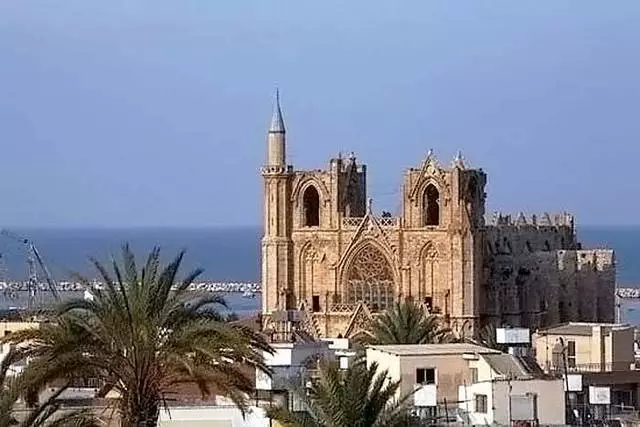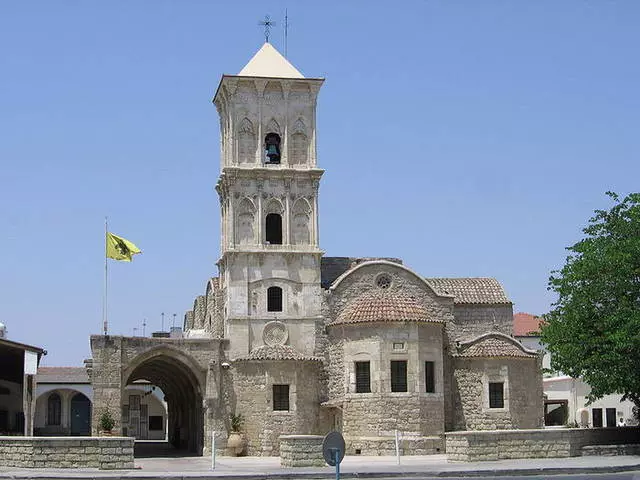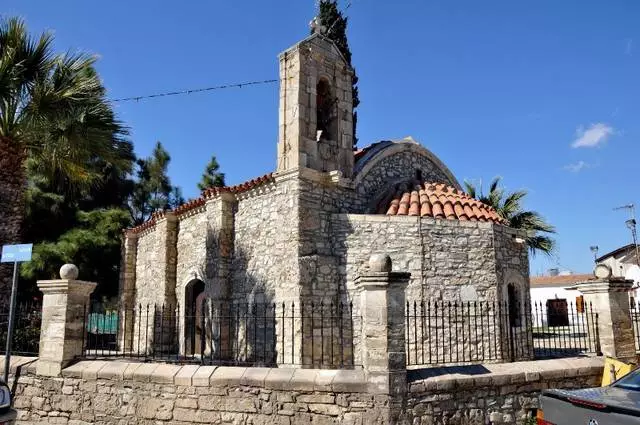Larnaca is the third largest city in Cyprus, the heir of the ancient city of Kitia. The Ahaeis settled it in the 13th century BC, and the finicians founded the strong kingdom here, which existed from the 9th century BC. 312 BC The epochs of the Ptolemyev dynasty. According to the local legend, the modern name of the city of Larnaca appeared only in the first years of Turkish yoke and was due to the fact that many wild animals dwell in these places. Translated "Larnaca" means "predator".

Acquaintance with the city is better to start with the Naberezhnye Finnikidees. The grove of high palm trees here forms a natural score, which creates a pleasant shadow on this crowded street at any time and night street. These trees were low for a long time, and therefore, this place was named Finikudes, which means nothing more than "small palm trees". On the right side of the embankment, the locals many years ago were installed Bust Kimon Athens, who was killed near the Chinese in the marine battle, protecting the island from Persians. Recently, Larnaca City Hall turned this picturesque street into a popular holiday destination. Beautifully decorated pedestrian walkway, fountains and planted with all sorts of flowers Special dividing bands are an example of love for the native city shown by local authorities and residents. Cafes and restaurants are located here one by one, and in the summer season here reigns a real cosmopolitan atmosphere. Here on the embankment is the first object for inspection - the garrison of Larnaca. It was built in the Middle Ages, in the present appearance he acquired during Turkish rule. The British placed prisoners here and turned the garrison to a full-fledged prison. And today there is a local Museum of Middle Ages. In the summer, various public and cultural events are held in the garrison of the city of Larnaca. Not far from the garrison is a Tuzla Mosque, which was originally a three-penette medieval temple. A few meters away in the direction of the city center is the church of Saint Lazar.

The church of St. Lazarus was built by Emperor Lvir Vi Wise in the 9th century above the grave of the saint and was restored in the 17th century. This is one of the most striking examples of Byzantine architecture in Cyprus. The temple is a three-end throne church, divided by the aisles decorated with decorative ancient columns and the bases of three domes in the central neop. Covered with gold iconostasis is made of wood and dated by the 18th century. He refers to the style of Baroque and is known for its icons. Of great interest is the bell tower, built of treanted stone and decorated with bas-reliefs. In the walls of the Church with the external side, tombstones are embedded with the names of ancient and wealthy families of the city. In the basement of the temple there is a sarcophagus, in which the relics of the saint were found. On it, a knockdown inscription was found: "Friend of Christ".
Walking further on the old town, be sure to visit the Peieridi Museum. It is here that a wonderful collection of Cypriot antiquities, which are the result of painstaking collecting five-generations of this family. The beginning of this collection was putting Dimitri Pieridi in the 19th century. Here are archaeological treasures, ranging from the copper century until the 14th century AD. Particularly interesting glass objects of the Roman period, as well as medieval ceramics of 13-14 centuries, among which there are extremely rare specimens.
The Archaeological Museum of Larnaca is located on Calogrenn Square. Here are exhibits dating from the neolithic era to the Roman period. It is near this archaeological museum that the remains of the ancient city of Kitimia were found on Leonty Maher, which are dated 13 centuries to AD. Here you can see fragments of cycloic walls built from huge stones, as well as a complex of five temples.
Next, go on the way towards Limassol. Here in the Kamara area, pay attention to the chain of 33 Arches is a stone water pipe built in the 18th century by the Ottoman ruler of Cyprus Bekiir Pasha for water supply Larnaca from the Tremmifo River. The stones used for the construction of the water pipeline are taken from the collapse of the buildings of an ancient settlement of Kathy.
Next, visit some villages of this area. In the village of Kitty, stop to inspect the Church of the Virgin Angeloktists and its famous mosaic, which depicts Holy Maria.

A few kilometers from Kitty, in the direction of the sea are no less interesting settlements of the perivoli and Masoto. Having visited them and buying a souvenir in memory of these places, heading to the Solonitsa Larnaca, which are nearby from Larnaca International Airport. This is the first sight of the island, which is seen by guests flying to Cyprus. Modern road connecting the city of Larnaca and Kitty, divides the lake into two parts. The total Solonchakov Square occupies 3.5 square meters. km. The bottom of the lake is at a depth of approximately 2 m. Below the sea surface. In winter, a lake with salty water is formed here, where many types of migratory birds are reflected, among which ducks and flamingos are dominated. In the summer, the picture is completely changing: the water evaporates and remains only a thick layer of salt, which covers all the bottom of the lake.
On the one hand Solonchak is the Muslim mosque Tekses Hala Sultan. She dedicated to Hala Sultan or the mind of Haram, Tete Magomet, which during the Arab raids of 649, directed against the Kitia, died, falling from Moula. This mosque hidden among high palm trees and other trees is considered after Mecca and Medina the most sacred place of worship of Muslims. Next, passing 12 km. On the main road, you will fall into the village of Kitty. It is located on the plain and its main attraction is the church of the Virgin Angeloktists dedicated to the Mother of God. And the south of the Church is sure to inspect the Frankist chapel of the 14th century, which belonged to the Zimbel family, with the surname coat of arms located above the entrance. Now there is a small Byzantine Museum. From the north side of the church is the Byzantine chapel, which is the names of St. Kozma and St. Domyana with unique wall paintings.
